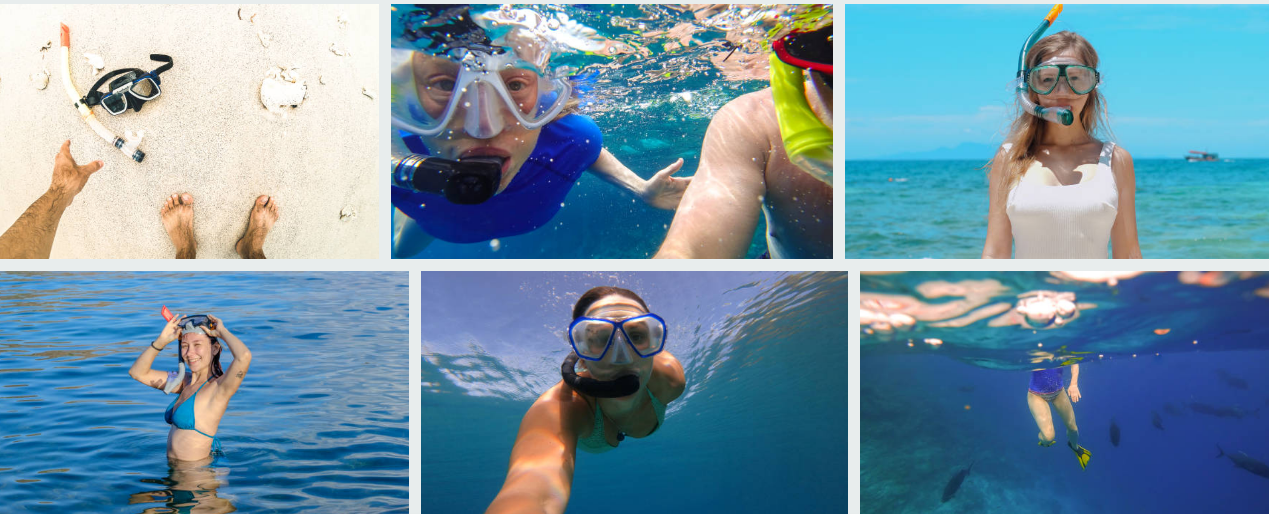What’s the Snorkeling Best Time ?
But to make the most of this experience, timing is everything. Whether you’re a beginner or an experienced snorkeler, know What’s the Best Time for Snorkeling? can significantly enhance your adventure.
In this article, we’ll dive into the ideal conditions for snorkeling, the best seasons, and the factors that contribute to a perfect underwater excursion. By the end, you’ll be equipped with the knowledge to plan your next snorkeling trip for maximum enjoyment and safety.
Why Snorkeling Best Time matters
Before jumping into the water, it’s crucial to understand why timing plays such a vital role in snorkeling. Several factors influence visibility, marine activity, and overall safety:
-
Water Clarity – The best time for snorkeling is when the water is calm and free from sediment or plankton blooms, ensuring crystal-clear visibility.
-
Weather Conditions – Calm seas, minimal wind, and sunny skies make for a smoother and more enjoyable experience.
-
Marine Life Activity – Certain times of the day or year bring more fish, turtles, and other sea creatures into view.
-
Crowd Levels – Avoiding peak tourist times means fewer disturbances and a more peaceful snorkeling session.
Now, let’s break down the best time for snorkeling based on these factors.
Snorkeling Best Time of the day

1. Early Morning (Sunrise to Mid-Morning) as one of Snorkeling Best Time
The early morning is often considered the best time for snorkeling because:
-
Calm Waters – Winds are usually lighter, resulting in smoother seas and better visibility.
-
Active Marine Life – Many fish species are most active during early hours, feeding near the surface.
-
Fewer Crowds – Beaches and snorkeling spots are less crowded, allowing for a more immersive experience.
2. Late Morning to Early Afternoon
If you’re not an early riser, late morning can still be a great time, especially in tropical locations where sunlight penetrates the water best between 10 AM and 2 PM.
-
Optimal Sunlight – The sun is high, illuminating the underwater world brilliantly.
-
Warmer Water – The water temperature is comfortable, making it pleasant for extended snorkeling sessions.
3. Late Afternoon (Before Sunset)
While visibility may slightly decrease due to winds picking up, late afternoon snorkeling offers:
-
Golden Lighting – The sun’s angle creates stunning underwater reflections.
-
Unique Marine Sightings – Some species, like octopuses and lobsters, become more active as dusk approaches.
Avoid snorkeling at night unless you’re with a guided tour using proper underwater lights, as darkness reduces visibility and can be unsafe.
Snorkeling Best Time in terms of season
The best time for snorkeling also depends on the season. While tropical destinations offer year-round opportunities, some periods are better than others.
1. Dry Season (Winter & Spring in Tropical Regions)
-
Clear Skies & Calm Seas – Less rainfall means better water clarity.
-
Milder Temperatures – Warm but not excessively hot, making it comfortable for long snorkeling trips.
-
Peak Marine Activity – Many fish species breed during this time, increasing sightings.
Best Locations:
-
Hawaii (April to October)
-
The Caribbean (December to April)
-
The Maldives (November to April)
2. Shoulder Seasons (Spring & Fall)
-
Fewer Tourists – Lower crowds mean more secluded snorkeling spots.
-
Balanced Weather – A mix of sunny and rainy days, but often with excellent visibility.
Best Locations:
-
Great Barrier Reef, Australia (September to November, March to May)
-
Southeast Asia (Thailand, Indonesia) (April-May & September-October)
3. Avoiding Monsoon & Storm Seasons
-
Heavy Rains reduce visibility by stirring up sediment.
-
Strong Currents make snorkeling dangerous, especially for beginners.
Regions to Avoid During Monsoon:
-
South Pacific (November to March – cyclone season)
-
Caribbean (June to November – hurricane season)
Tidal Influences on Snorkeling
Tides play a crucial role in determining the best time for snorkeling. Here’s how:
1. High Tide
-
Deeper Water – Allows access to reefs that may be too shallow at low tide.
-
Clearer Water – Less sediment disturbance.
2. Low Tide
-
Shallow Reefs – Some coral formations may be exposed or too close to the surface, risking damage to both the reef and snorkelers.
-
Stronger Currents – Water movement can be unpredictable.
Pro Tip: Check local tide charts and aim for slack tide (the period between high and low tide when water movement is minimal).
Water Temperature & Its Impact
The ideal water temperature for snorkeling ranges between 77°F to 84°F (25°C to 29°C). Colder waters may require wetsuits, while excessively warm waters can lead to overheating.
Best Water Temperatures by Region:
-
Caribbean & Southeast Asia – Consistently warm (80°F+ year-round).
-
Mediterranean – Best in summer (June-September).
-
Pacific (Hawaii, Fiji) – Warmest from June to October.
How to Maximize Your Snorkeling Experience
Now that you know the best time for snorkeling, here are some extra tips to enhance your adventure:
1. Choose the Right Location
-
Coral Reefs (Great Barrier Reef, Belize Barrier Reef)
-
Marine Sanctuaries (Hanauma Bay, Molokini Crater)
-
Shipwrecks & Caves (US Virgin Islands, The Bahamas)
2. Use Proper Gear
-
A well-fitting mask prevents leaks.
-
A dry-top snorkel keeps water out.
-
Fins should be snug but not too tight.
3. Practice Safe Snorkeling
-
Never snorkel alone.
-
Avoid touching marine life or coral.
-
Stay hydrated and wear reef-safe sunscreen.
4. Follow Marine Etiquette
-
Maintain buoyancy to avoid damaging reefs.
-
Keep a safe distance from wildlife.
-
Avoid feeding fish, as it disrupts their natural behavior.
Plan Your Perfect Snorkeling Adventure
The best time for snorkeling ultimately depends on a combination of factors—time of day, season, tides, and location. By choosing early mornings, dry seasons, and slack tides, you’ll enjoy crystal-clear waters, abundant marine life, and a serene underwater escape.
So, whether you’re planning a tropical getaway or a local ocean adventure, timing your snorkeling trip right will make all the difference. Grab your gear, pick the perfect moment, and dive into an unforgettable underwater experience!
Happy Snorkeling! 🌊🐠









